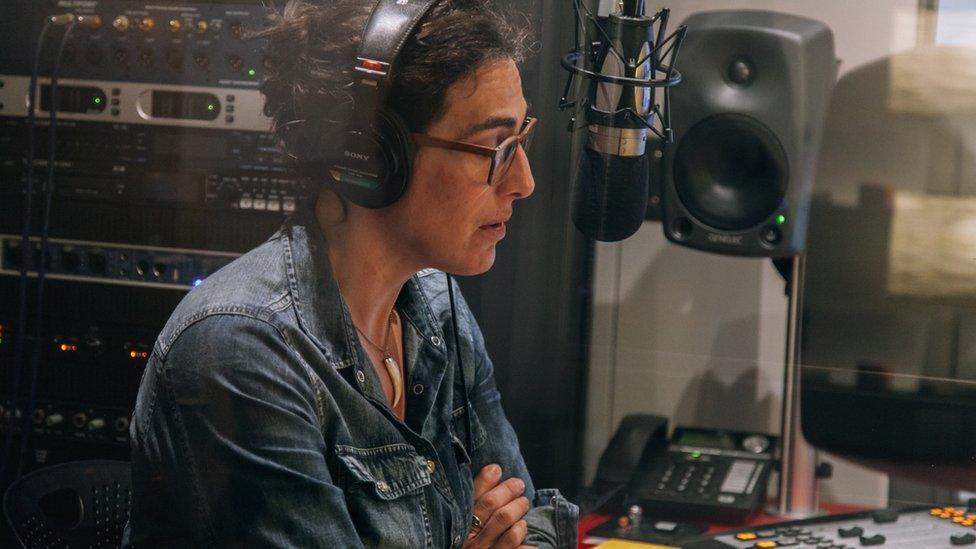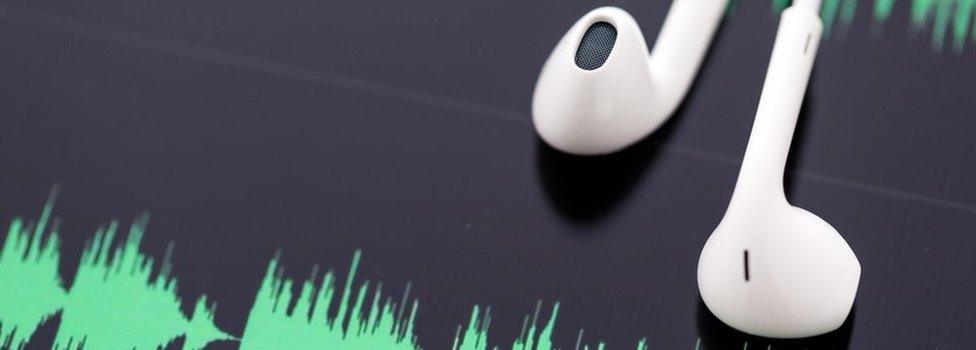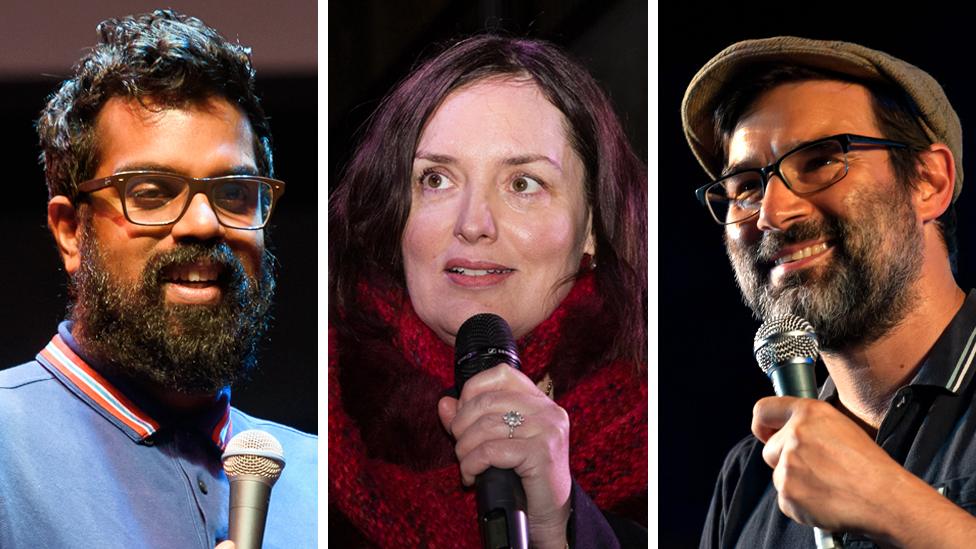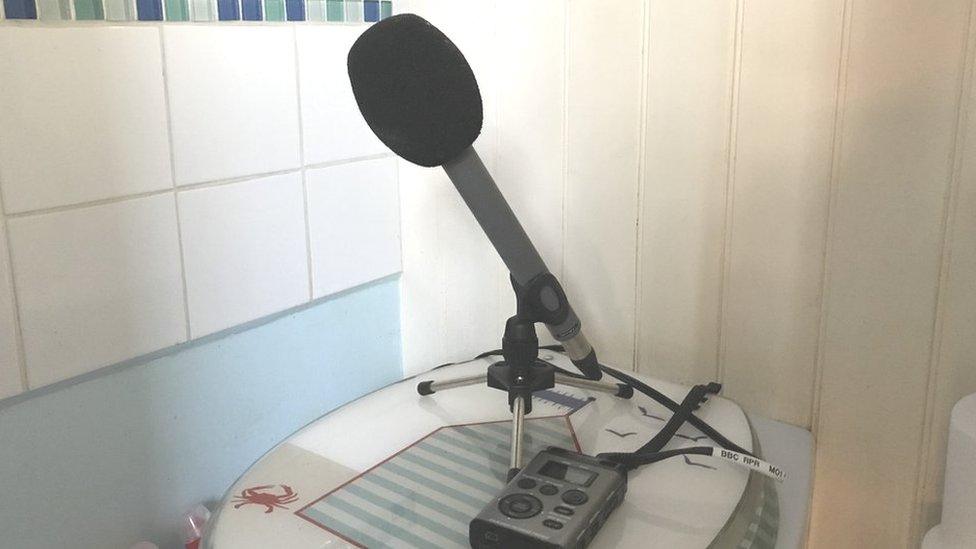'Intimacy plus': Is that what makes podcasts so popular?
- Published

Celebrity status: Jessica Williams and Phoebe Robinson host the podcast 2 Dope Queens
If you mention the word "podcast" to people, many immediately come up with a list of "must listens". But this popularity is fairly recent. Why have podcasts taken so long to become visible, and does that mean you can make a living out of them?
It's easy to make a podcast.
All you need is something you want to say, a microphone, a recording device (known as a tape recorder in the old days) and some editing software.
For enthusiasts, part of the beauty of audio has always been that you don't have to be a technological wizard to create something magical.
While podcasts have been around for a good decade and a half, they've emerged from their niche recently thanks to the proliferation of smartphones, podcast apps and voice-activated speakers in homes.
Plus, their more informal, less "produced" style is proving popular with the much sought-after "millennial" generation, says Emily Bell, director of the Tow Center for Digital Journalism in New York.
"What podcasting has is a youth audience that feels very passionately about the people that they listen to and that they engage with."

And the old problem of visibility has largely been solved by distribution platforms from the likes of Apple, SoundCloud and Whooshkaa, although it's still true that old fashioned word-of-mouth is one of the most effective ways of getting your podcast noticed.
Now there are more than 600,000 shows worldwide covering everything from sport, politics and music, to the thoughts of geeks in their bedrooms.
The podcast has become fashionable.
And not just in the West. South Korea tops the global rankings, according to the Reuters Institute Digital News Report 2018, external, with 58% of its population listening to a news podcast in the past month, compared with 33% in the US and 18% in the UK.

Podcasts are proving particularly popular with a new generation of listeners
Young people are now far more likely to listen to podcasts than to speech radio, Reuters says.
"What distinguishes radio from TV is the intimacy. What distinguishes a podcast from radio is that it's intimacy plus, because you've chosen it and it's literally in your ears," explains Olly Mann, who's been co-hosting Answer me This since 2007 with comedian Helen Zaltzman, and now also produces The Modern Mann.
"People tend to listen on headphones in their personal bubble."
He describes the growth in podcasts as a "slow, gentle upward curve", but like others, acknowledges that there is one show responsible for propelling the genre into the mainstream: Serial.
In October 2014, the team behind the successful public radio programme This American Life released the first episodes of their true crime story set in Baltimore County, Maryland.

Reporter Sarah Koenig and the Serial team popularised the true crime podcast
Serial broke the mould because it was a podcast first, not just a radio show uploaded to the internet after broadcast, as was typical at the time. Producer Julie Snyder says this meant that if the show flopped, they hadn't wasted too much time, money or reputation.
But listeners were gripped by reporter Sarah Koenig's investigation into the murder of high school student Hae Min Lee and the conviction and imprisonment of her ex-boyfriend Adnan Syed.
Now in its third season, Serial has been downloaded 420 million times in total. And it's testament to the influence of Season One that Syed has been granted a retrial.

Five podcasts to look out for in 2019

Wolverine
Recode Decode
Dirty John
Hip Hop Saved My Life
Without Fail
Source: Wired, Global, Vulture Lists

"A lot of people were not used to hearing non-fiction serialised storytelling that's as compelling as Serial was," says Ms Snyder.
"And because the technological barriers had sort of come down, it was really easy to get at. For the first time a lot of people learned how to access a podcast."
Its success encouraged many listeners to explore what else was out there, she believes.
The sound of money
But how do you make money from podcasting?
Here's where it gets a little complicated.
Once you've pressed Save on your programme, you need a hosting platform to which you can drag and drop your show.
That platform creates an RSS ("rich site summary" or "really simple syndication") feed - the link between your audio file and the so-called pod catchers - programs that download and distribute the podcasts to your listening device.

Popular podcasters: Romesh Ranganathan, Deborah Frances-White and Adam Buxton
"It's a very fragmented marketplace," says Ross Adams, chief executive of Acast, the Stockholm-based podcasting platform that hosts 3,500 podcasters.
Acast not only looks after the technical nuts and bolts, but also the advertising that gives podcasters a chance to monetise their content.
In common with other digital platforms, Acast's global sales teams sells advertising on a "cost per mille" (CPM) basis.
So if your podcast has 1,000 listeners and there are six ad slots, that adds up to a total of 6,000 impressions, or clicks, to sell. But podcast advertising doesn't come cheap. Airtime ads start at about £12 ($15) CPM, but some branded content may sell for as much as £100 ($126) CPM, says Mr Adams.


"It's the most expensive priced audio product in the marketplace," says Mr Adams, largely because podcast audiences tend to be affluent and audio ads are effective, particularly if they're read out by the programme host.
"It's not a commercial radio audience that's listening, it's the Netflix subscriber, the Spotify premium subscriber," he says. "It's the very affluent audiences, which is why we can charge a lot higher."
This sounds like good news for the impoverished podcaster, but bear in mind that as far as spending on digital advertising goes, audio is still the poor relation to video, where revenue is measured in billions, rather than hundreds of millions.
Nevertheless, a report for the Interactive Advertising Bureau by consultants PWC predicts advertising revenues in the US digital audio sector will grow more than 110% to $659m (£521m) by 2020.

The smallest - least echoey - room in the house can double up as a podcasting studio
It's that sort of upward trend that has convinced industry heavyweights like the UK radio company Global to launch a podcasting service on its global player app.
Networks like Radiotopia and Gimlet Media, and platforms and apps like Acast and Global, help make the podcast visible to listeners and advertisers, and because they aggregate podcasters, even those with lower download figures stand a chance of attracting advertising.
That said, the marketplace is still too crowded for many people to make serious money.
"For anybody who wants to make a living on it there's nowhere near enough money," says Emily Bell.
"I'm sure probably over 80% of the revenue goes to the top 20% of the podcasts."
But audio has never been all about the money. It's a medium for enthusiasts produced by enthusiasts. And podcasts may have secured its future.
Follow Technology of Business editor Matthew Wall on Twitter, external and Facebook, external